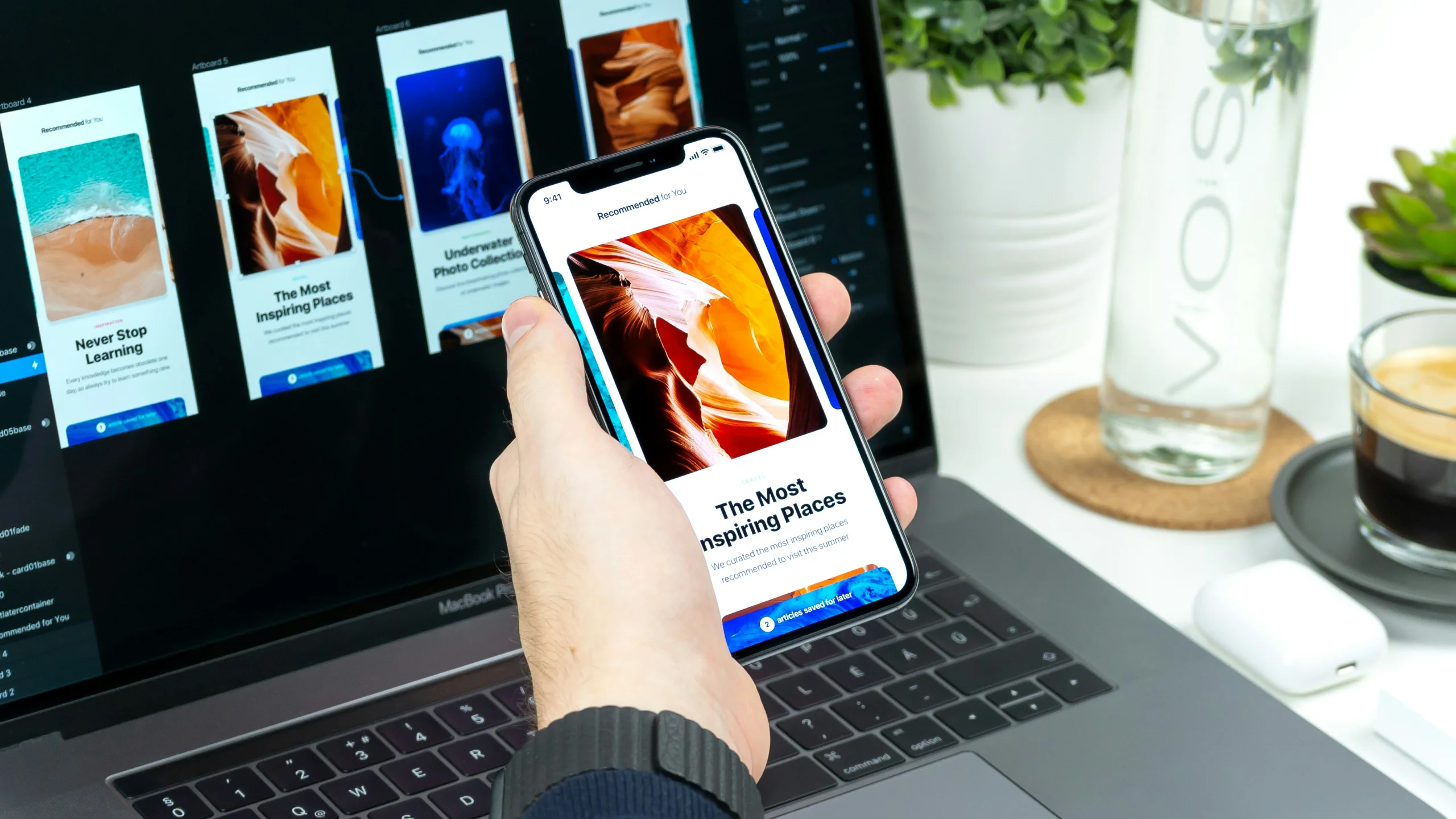
Designing for Human Impact in a Hyper-Digital World
The way users interact with digital products is evolving fast—and in 2025, UI/UX design is shifting toward deeper personalization, emotional connection, and seamless real-world integration.
Let’s dive into the top UI/UX design trends that will shape the digital experiences of tomorrow:
1. Emotion-Driven Interfaces (Emotive UX)
In 2025, successful interfaces won’t just be usable—they’ll feel human. Think dynamic animations, tone-aware copy, and responsive micro-interactions that adapt based on user mood, context, or behavior.
✨ Example: Interfaces that adjust their tone or visuals based on how the user interacts with the app (e.g., a calmer UI if stress indicators are detected).
2. Hyper-Personalization with AI
Thanks to AI and behavioral data, apps can now personalize not just content—but also layout, functionality, and even navigation.
🎯 Impact: Interfaces that evolve to fit users’ preferences over time, removing clutter and increasing engagement.
3. Voice & Multimodal Interactions
Text, tap, voice, gesture—users want flexibility. More apps in 2025 will support multimodal inputs to make accessibility seamless.
🔊 Trend: Voice UI combined with screen feedback, especially in smart home, automotive, and healthcare UX.
4. Skeuomorphic 2.0 – Tactile UI is Back
Flat design is giving way to a more tactile digital aesthetic—shadows, glass textures, soft gradients, and layered depth are back in subtle, elegant ways.
📱 Why it works: It feels familiar, intuitive, and real—especially on AR and foldable displays.
5. AI-Assisted UX Writing & Microcopy
Microcopy is now auto-generated, context-aware, and tone-adaptive. AI is enabling UX writers to iterate faster and personalize content at scale.
✍️ Toolkits: AI-powered Figma plugins and copy generators are becoming standard in UX toolkits.
6. Design for Mental Wellness
Digital well-being is a UX responsibility. Expect more focus timers, usage nudges, calming animations, and anti-addiction UI principles integrated into products.
💡 Ethical design becomes a key differentiator, especially among Gen Z users.
7. AR-Ready Interfaces & Spatial UX
As Apple Vision Pro, Meta Quest, and other AR wearables go mainstream, UX must consider 3D space, gesture mapping, and “interface layering” in real-world contexts.
🧠 Design Challenge: Making interfaces intuitive in environments where screens may no longer exist.
8. No-UI Interfaces and Invisible Design
The best UI might be the one you barely notice. Predictive automation and minimal UI (like Google’s ambient computing vision) are redefining what interaction even means.
🤖 Think: Interfaces that act before users need to ask—while maintaining transparency and control.
9. Sustainable & Low-Carbon Design
UX designers are now measuring energy footprints of design decisions. Dark mode, lighter assets, and eco-conscious UX choices are becoming part of ethical digital practices.
🌍 Bonus: It also boosts performance and improves accessibility.
10. Design Systems that Design Themselves
Dynamic design systems powered by AI and component automation are enabling faster, more consistent design at scale.
🧩 Future-ready teams will spend less time pushing pixels and more time optimizing flows and user logic.
Final Thoughts
In 2025, UI/UX is no longer just about usability—it’s about relevance, emotion, adaptability, and responsibility.
As designers, our job is to anticipate need, evoke trust, and create joy—in every interaction, on every device.
🔗 Ready to future-proof your digital experience?
Let’s build something intuitive, inclusive, and impactful.

